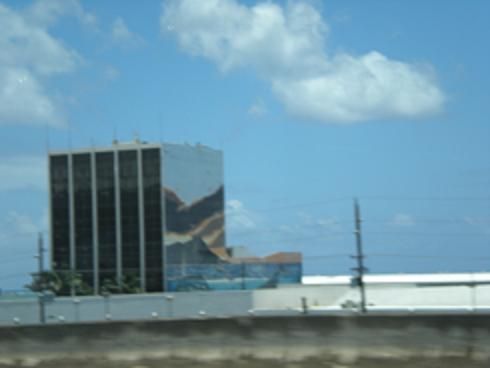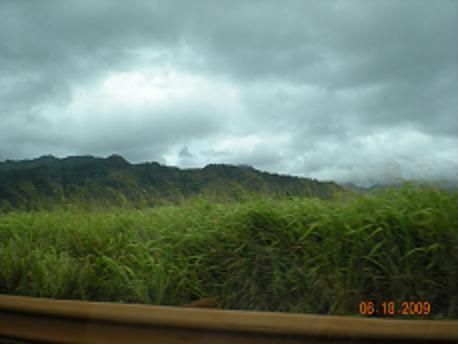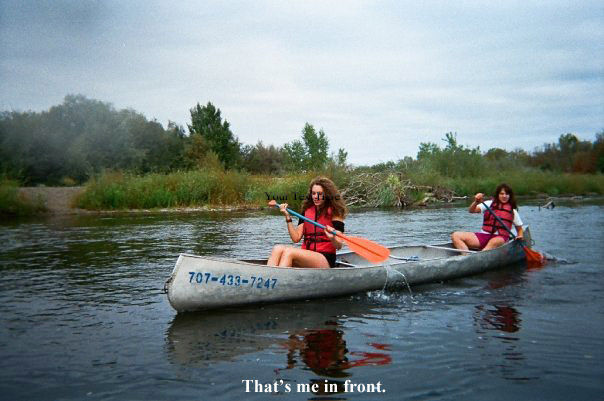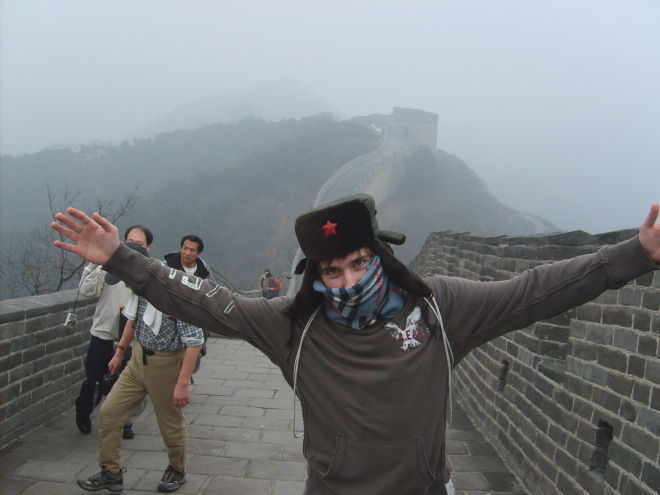A Bavarian vacation takes a family and their dog from the urban wonder of Munich to the German mountaintops.
It seems that almost everyone who comes to Germany wants to see Bavaria, the southeastern part of Germany encompassing Munich. The famous capitol city is surrounded by the Bavarian Alps, making it popular with tourists. We have been there several times ourselves. It's the grandeur of the mountains that brings us back, but I digress!
A Munich Overnight
On this trip, we drove from our home in Heidelberg to Munich, where my son Peter wanted to see where the famed Oktoberfest takes place. We walked around the old part of the city that first night, having dinner at the famous Hofbrauhaus. We ate in the garden and had a very nice German meal with the full liter of beer.
We arrived on a Friday night and had not made our room reservations until the day we left, a big mistake as Munich's cheaper bed and breakfasts were already full. We paid about US$150 for one room night at the dog-friendly Hotel Amba (49 8954 5140); a karplatz for our car and a full German breakfast were included in the price. The next morning, we awoke ready to go sightseeing and made our way to the center of the Hauptstrasse main street where bustling boutiques lined the street. Next we visited the market place called Marienplatz where a glockenspiel entertained crowds in the ancient Rathaus tower. I played a glockenspiel in high school and expected to hear music, but was instead entertained by miniature figures performing a jousting match. We took note that the tower was being renovated and wondered if the glockenspiel would play music at its completion and hopefully in time for our next visit to September's Oktoberfest.
We climbed up the tower in the church of Peterskirche to get a marvelous, but crowded, view of all of Munich. Then we walked the street and saw another cathedral and stopped for lunch at the Hofgarten. This was a very nice, cool and relaxing place to stop. It's an open park with trees and beautiful flowers. There are food stands to purchase drinks and wursts and sit at tables under the trees.
We walked north to the Englischer Garten. What a beautiful park! There was a river people actually surfed on that the city designed with an artificially churning wave. The water continued to flow rapidly through the park, very shallow at about 4 feet, greenish-white in color and very cold. But in 90°F (32°C) degree weather, refreshing! We watched children jump in, float down and then make their way to the side to jump out, run up stream and start over again. After cooling off in the river ourselves and enjoying the beautiful flowers and trees, we made our way to the captivating Chinesischer Turm tower where an oom-pah band entertained and vendors were selling what else? More beer, pretzels, ice cream and wursts. This stop was really overpriced compared to the Hoftgarten.
Alpine Hike to the Eagle's Nest
After lunch and relaxing in the park, we made our way by car from Munich for the mountainous Berchtesgaden, about an hour-and-45-minute drive. We stayed at the very nice, old Wittelsbach where the staff greeted us warmly and made us feel right at home. Once again there was no A/C, but the nights were cool and comfortable, we had a full German breakfast and off-street parking. We used this as our base for hiking and began the best part of our trip — hiking in the German mountains.
We started at Kehlstein Mountain where Hitler's famous Eagle's Nest sits. We drove up to the Hintereck parking lot, followed the signs, and hiked the rest of the way on a quiet service road. The two-hour walk was steep but not too difficult and, at the elevator leading to the Nest, multi-lingual tour guides were available for hire. The brass-plated elevator itself was grandiose; supposedly Hitler was claustrophobic so they made it large. But before going up the elevator, our guide pointed out places in Obersalzberg where the Berghof used to be, SS barracks, workers barracks, Bormann’s farm, and Salzburg, Austria; all of which could be seen from our perch on this mountain. Inside the Nest, she was also happy to point out that not much was left as the American soldiers took whatever they could when they reached this point in 1945. You learn alot about WWII by living in Germany, not the facts in books but the sentiment of Germans. It's very interesting!
From the Eagle's Nest there are even more beautiful views, so we took Christmas card photo ops and ate our packed lunch. We bypassed the elevator ride down and walked all the way back to our car. After showering at our hotel, we drove to a little village called Maria Gern about 10 minutes away for dinner and listened to more Bavarian music. What looked like a long, straight road was actually winding up and not so easy to find, but always beautiful.
Watzmann Mountain
We left at 8am the following day for the Koenigssee and our “hut-hopping” adventure. We discovered that the lake in this area was beautiful and there are ferries and tour boats to show tourists around, or families can do what we did, hike up Watzmann Mountain. We have hiked up Pike’s Peak and down into the Grand Canyon, but hiking in Germany is very different, it seemed as though we walked at about a 45° angle for 2 hours. The hike started by crossing a covered bridge and walking along a huge bobsled run (which our son wants to try in the winter when he returns!).
When the trail finally flattened out, we were only five minutes away from the first hut on our hike: Kuehrointhaus (0171 353 3369). This hut is nestled in a beautiful Alpine valley surrounded by huge, “craggy” mountains. Hikers can stay overnight here for 18 euros each (cheaper if you belong to the Alpine club), buy food, rest, refill water pouches and just enjoy the beautiful scenery. Our dog took a much needed nap while we ate and got some rest ourselves before heading up to the Watzmann House at 1930 meters. During our stay, we saw a cow in what looked like a little Alpine house! It came out ringing its bell and then went back inside.
The beginning of this leg went smoothly and we enjoyed the ridge shaded by huge pines, but 30 minutes later, we arrived at a challenging area. We managed without too much difficulty and made use of the cable on the rock wall to help us, but our 14-year-old dog had some trouble. We helped her along and eventually reached the "Sound of Music" moment above the rocks where we rested and soaked in the beautiful scenery.
It took us 2½ hours to reach the Watzmannhaus (0865 296 4222), sitting along a ridge just before the Watzmann peak. This hut is four stories with a large deck where you can sit, relax, drink a refreshing beverage, eat cake and just marvel at the beauty of the country. We stayed the night here and enjoyed taking the dog out at 2:30 am, when we were amazed by the clear sky, beautiful constellations and even shooting stars!
The next morning we realized we couldn’t do another two-hour hike to the peak with the dog; it was just too rocky for her at this point. So, we started back down at 7am and took an alternate route that didn’t have a rock climbing section. We came upon a little Alpine hut with many bell-ringing cows that served food and drinks but didn't have sleeping rooms. So we walked on and reached a parking lot in Schoenau after about 3½ hours. Our son carried the dog over his shoulder for about 30 minutes and then she wanted to walk again. We had to walk another hour along a fussweg to get to our car at the Koenigssee. It was hot, hot, hot and we were very tired. When we arrived at a covered bridge on the lake, we stopped at the first restaurant we saw for lunch and took a much needed swim in the cold mountain water.
A Salzburg Overnight
We decided to make the 30-minute drive onto Salzburg, Austria (just outside of Bavaria) where again we didn't have reservations but called Tourist Information for assistance. We ended up staying just outside the town in the Hotel Gastein (43 662 622 565).
Even 40 years later, "The Sound of Music" is a major attraction and I enjoyed seeing it again, since the first time I was here in the 1970's. Salzburg was well worth the visit and we will return again.
Details, Details
Planning this type of trip in advance is crucial. Do your research and book well ahead if you'll be traveling to Germany in July or August, as air-conditioned rooms are hard to come by and Germans are typically not accustomed to hot weather. Our room lacked A/C and, of course, we were there during a heat wave in July… more than 90°F (32°C) each day! Keep in mind that when hiking on tourist-crowded weekends, you'll have to call around to see if there are any rooms available in a mountain hut. Or if you're taking a dog, always have a reservation regardless of the season.
Bavaria, When You Return in Winter
by Family Travel Forum Staff
Germany’s Bavarian Alps may not be alive in winter with the sound of music, but they do host several smaller ski resorts that are family-friendly and wallet-friendly. To acquaint yourself with them, try a family roadtrip one weekend, starting from Munich and encompassing a few resorts to the south, such as Berchtesgaden, Reit im Winkl, Sonthofen, Lenggries, or Oberstdorf.
Berchtesgaden is the main town of the Berchtesgadener Land and just 20 minutes from Salzburg, Austria. Famous for its wintertime bobsled and luge competitions, it has 36 miles of groomed cross-country trails, many spas and a picturesque Old Town built around a Lion Fountain from 1558.
Reit im Winkl is a smaller mountain town where traditional Bavarian clothes and music still prevail. The "Dö Koasawinkla" association keeps the old wardrobes, dances, and songs going. At an altitude of 695 meters, Reit im Winkl, too, is a center of cross-country skiing.Farther west, the scenic resort area of Sonthofen is popular for its hiking, horse-drawn carriage tours and mini-golf in summer, and its alpine skiing in winter. Families can also watch the longest toboggan run in Germany, enjoy folk evenings with live music, visit the resident cheesemonger, or search for fossils at Starzlachklamm.
Lenggries' most well-known mountain is the Braunek, with the Braunek cable car, eight alpine huts, and three ski schools. There are also cross-country trails in the nearby Isar Valley. Visitors can also take a sleigh ride or catch a local hockey game.
Even better known is Oberstdorf, home to the international ski jumping events, which hosted the FIS Nordic World Ski Championships back in 2005. Located in the southern corner of Germany, Oberstdorf boasts of the world's largest shoe (made of 18 cowhides) in its Museum of Local History and the world's largest pedestrian zone. Popular slopes Nebelhorn, Fellhorn, and Söllereck welcome alpine skiers, while nordic skiers can check out 70 km of prepared trails. An ice stadium, toboggan run, and ski schools for kids top it all off.
Stockton-Sooy Family Tips on Traveling With Dogs
We took our 40-pound dog with us and learned that in the mountains distances can become skewed, and you may end up on trails that are tough for your pet. There were other people with their dogs on the hike; dogs in Germany are more accepted than children!
Traveling around with our best friend, we never had any trouble finding a place to stay. The Germans love dogs and rarely say no to having them stay in your room with you, or go into restaurants with you. German dogs, however, must be trained…well. They cannot, in any case, go into bakeries or meat stores.
Dear Reader: This page may contain affiliate links which may earn a commission if you click through and make a purchase. Our independent journalism is not influenced by any advertiser or commercial initiative unless it is clearly marked as sponsored content. As travel products change, please be sure to reconfirm all details and stay up to date with current events to ensure a safe and successful trip.




